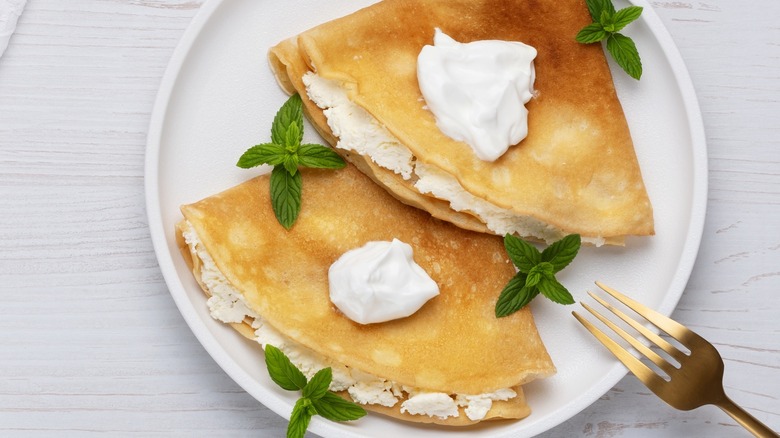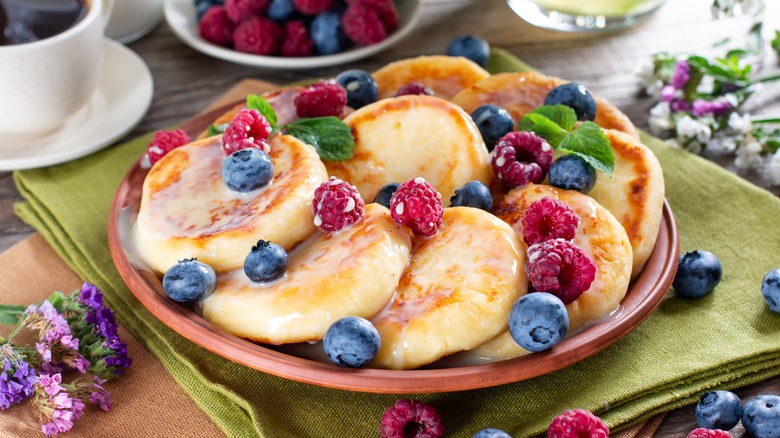What A Traditional Breakfast Looks Like In Russia
Russia has a rich history of art, literature, dance, and music, and the hardworking people who have contributed to building this vibrant culture for centuries have all been fueled by one thing: breakfast. While it's not the biggest meal of the day (that's reserved for the afternoon), this meal – "zavtrak" in Russian – is usually a substantial one, with endless options that are sure to satisfy anyone, whether you're a classic eggs-and-bacon person or someone who enjoys experimenting with breakfasts from different countries around the world.
One of the most basic and filling breakfasts you will find in Russia is kasha, or porridge, which can be made from buckwheat, semolina, or millet and topped with milk, honey, or fruit. Because this breakfast is so filling and quick to make, farmers and land workers have valued it for centuries. Another popular breakfast item that lives on today is the sandwich, which is often made with bread, butter, cheese, and some type of meat. This tradition comes from the centuries' old frugal practice of using last night's leftovers for breakfast, which is also incorporated today by making crepes, or blini, which can be filled with meat, cabbage, or cottage cheese, then topped with sour cream.
Choose a sweeter breakfast option
Of course, if you're in the mood for something a bit sweeter, the blini — or crepes — can also be topped with fruit, jam, or honey. Similarly, Russian cheese pancakes, or syrniki, help hit the spot and additional toppings include sweetened condensed milk or sweetened sour cream. These aren't your average pancakes, though, because they're smaller in size, but much fluffier in the middle. The addition of cottage cheese (which can be used in many ways) is what helps make these breakfast treats so spongy and light. This unexpected ingredient is also present in ponchiki, or powdered sugar-dusted donut holes, and zapekanka, a breakfast cake made with raisins.
To complement your zavtrak, have some authentic Russian tea, made with black tea, cinnamon sticks, cloves, and a mix of pineapple, orange, and lemon juices. Coffee isn't as traditional as tea in Russia, as it used to be reserved for the royal and rich. In the 19th century, however, it gained momentum with the general population because it became cheaper when mixed with other ingredients like chicory or chopped acorns, but the outbreak of World War I caused it to again become a luxury item. In 1972, another turnaround happened when the U.S.S.R. began its own production, and in the 1990s, Raf coffee — made with a steamed mixture of espresso, vanilla sugar, and cream – became the country's most popular coffee drink.

